
1/250 second exposure, Kodak Plus-x 125 black & white film.
8" f/10 schmidt-cassegrain telescope at prime focus.

The Sun is one object that I have not spent much time observing and photographing. Work during the day, and a greater interest in the night sky are the major causes of this. In 1988, as part of my astronomy studies at university, I had to observe and photograph the Sun on one occassion. Fortunately the Sun was cooperating with some active regions visible! Above is a whole-disk image, while below are a couple of closeup images.
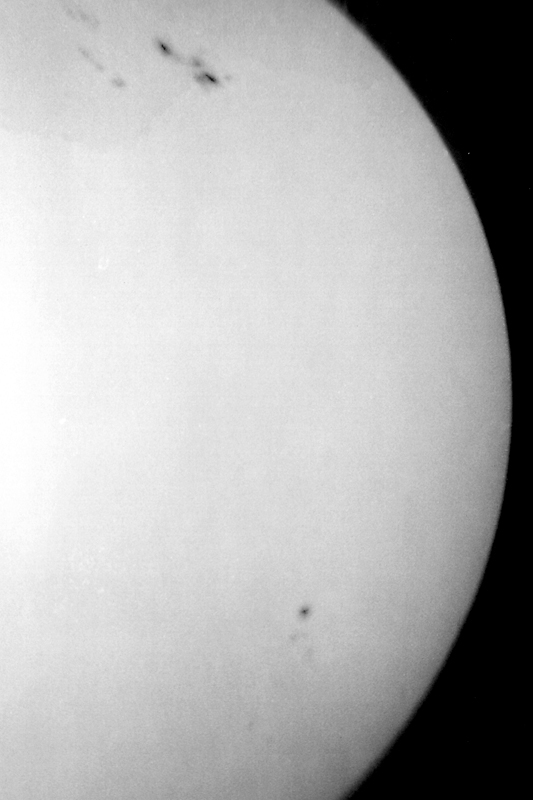

The one period when I was watching the Sun regularly was when I was teaching an introductory astronomy course that involved students observing and photographing the Sun. However this period coincided with sunspot minimum. It was rather difficult to get students (and the lab demonstrator!!) enthusiastic about observing a blank disk!!!
This image of a large sunspot was taken in September, 1994. It was one of the few times during the sunspot minimum when there was a large sunspot visible.
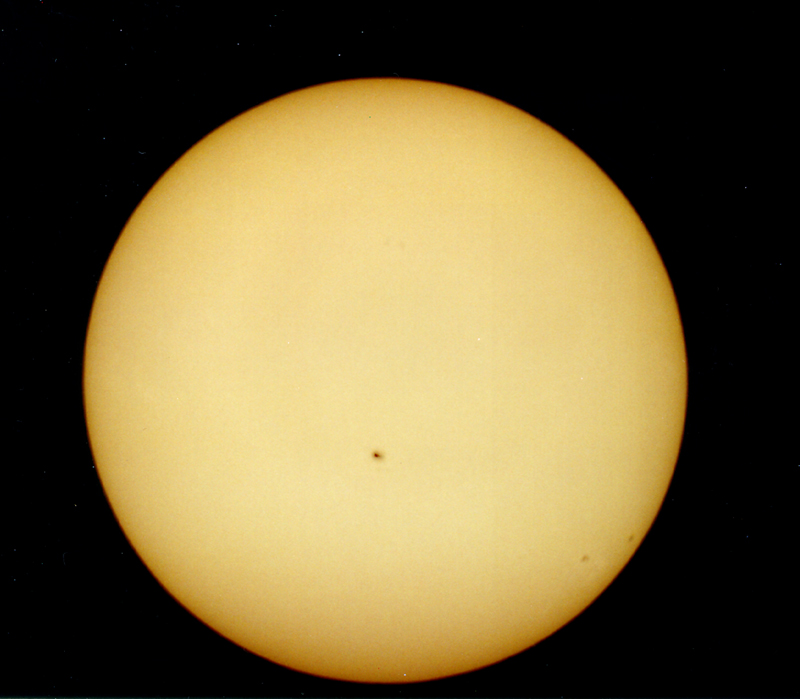
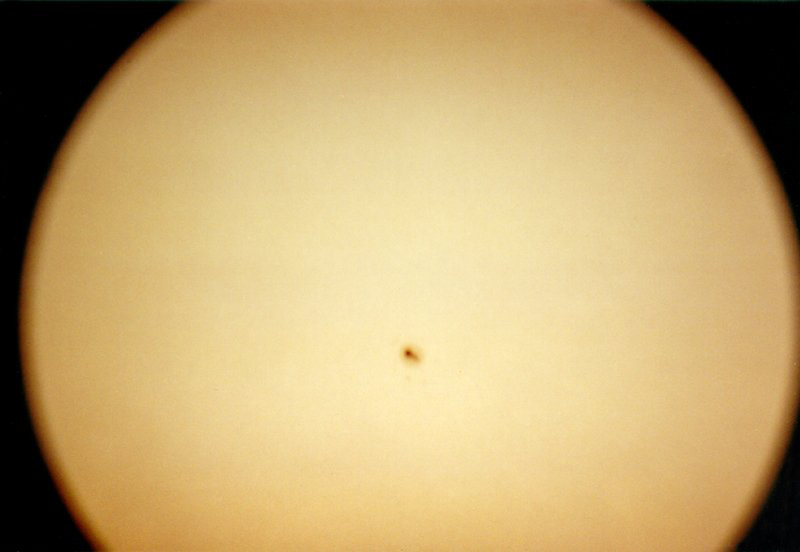
During the course in 1998, there were quite a few active regions visible on the sun.
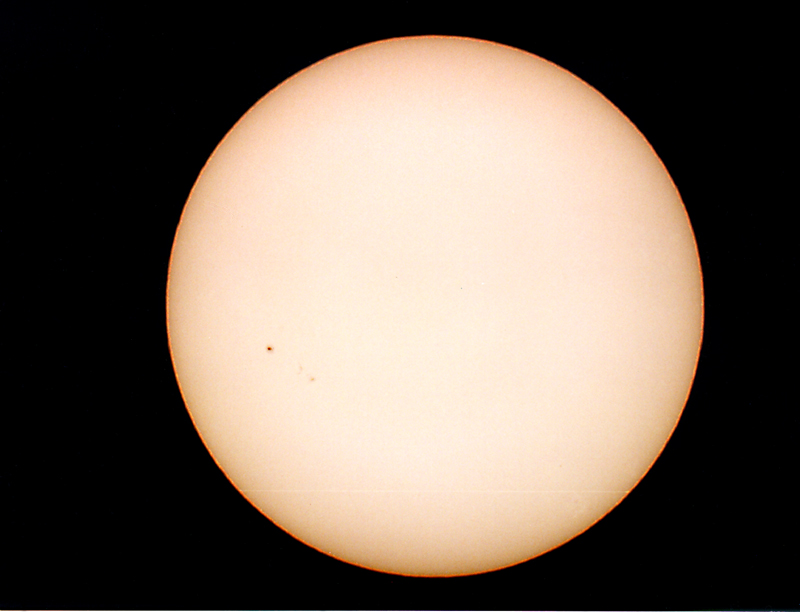
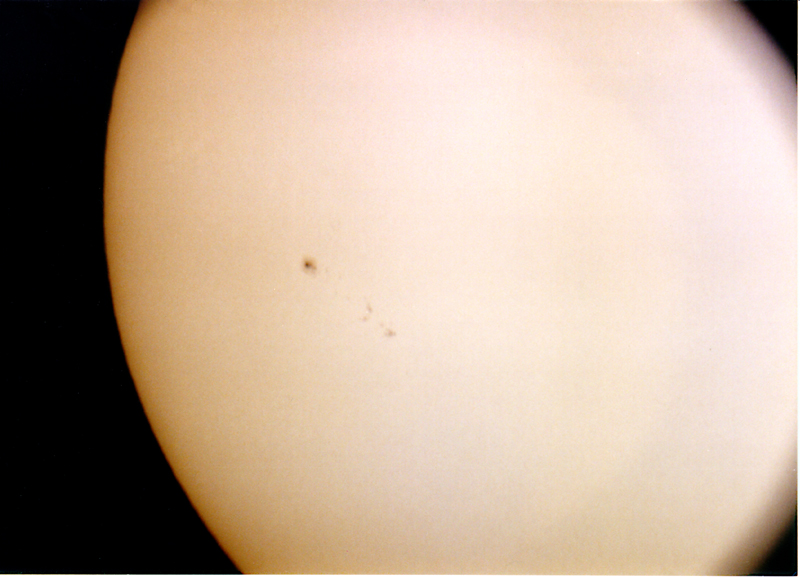
One time in 2000 while at the Chiro Observatory, I decided to have a look at the Sun. Seeing as I did not have a solar filter, I observed by projection, however it rather difficult trying to hold several sheets of paper behind the eyepiece and take a photograph at the same time. So I projected the image of the Sun onto the inside of the dome. The result was an image of the Sun nearly a metre across! This is one of the photographs I took. The line down the middle of the Sun is a join in the panels that make up the dome.
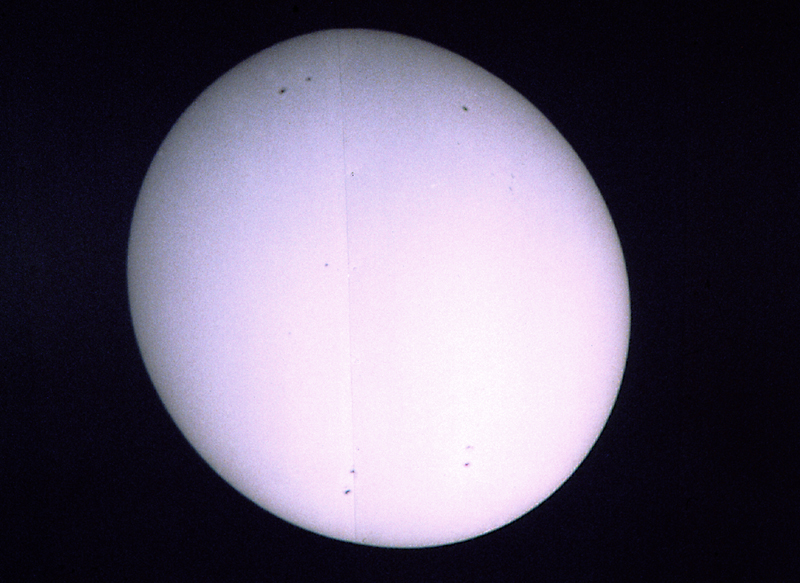
In June 2001 I made my final visit to the Chiro Observatory. Since this was around the time of solar maximum, the Sun was very active and displayed several naked eye sunspots. So I decided once again to photograph the Sun via projection. This time I managed to photograph the Sun's image projected onto a sheet of white paper that I was holding. Not easy thring to hold the paper with one hand while looking through the camera being held with the other!!
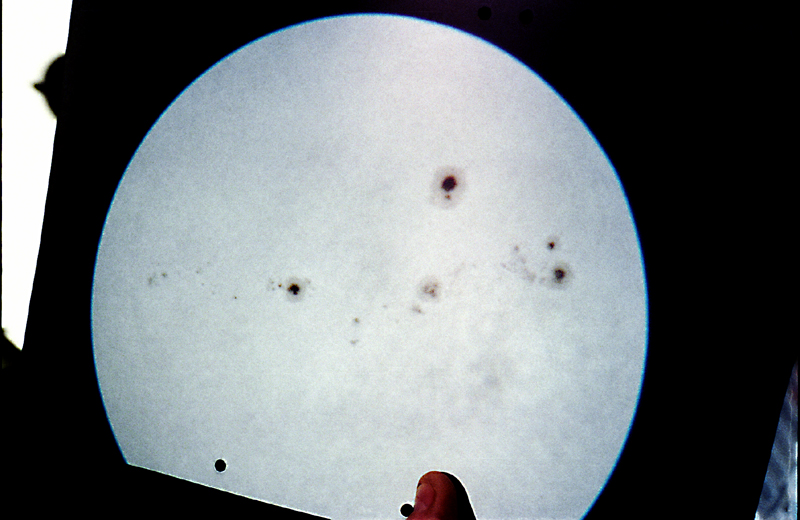
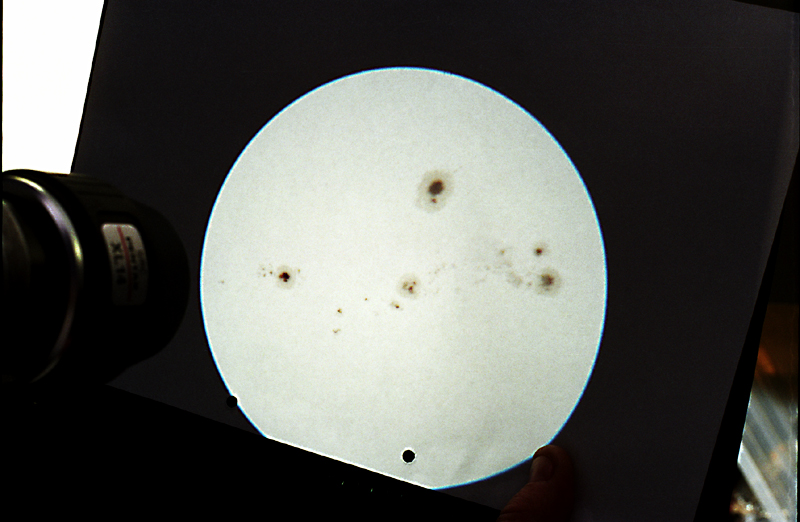
On one of my visits to the Learmonth Solar Observatory , I was given a negative of the Sun in H-alpha light. The Sun in H-alpha is a sight that every observer should try an see. The beautiful deep red disk of the Sun looks totally different to the view in white light. The image here gives only a slight hint as to the actual view through the telescope!
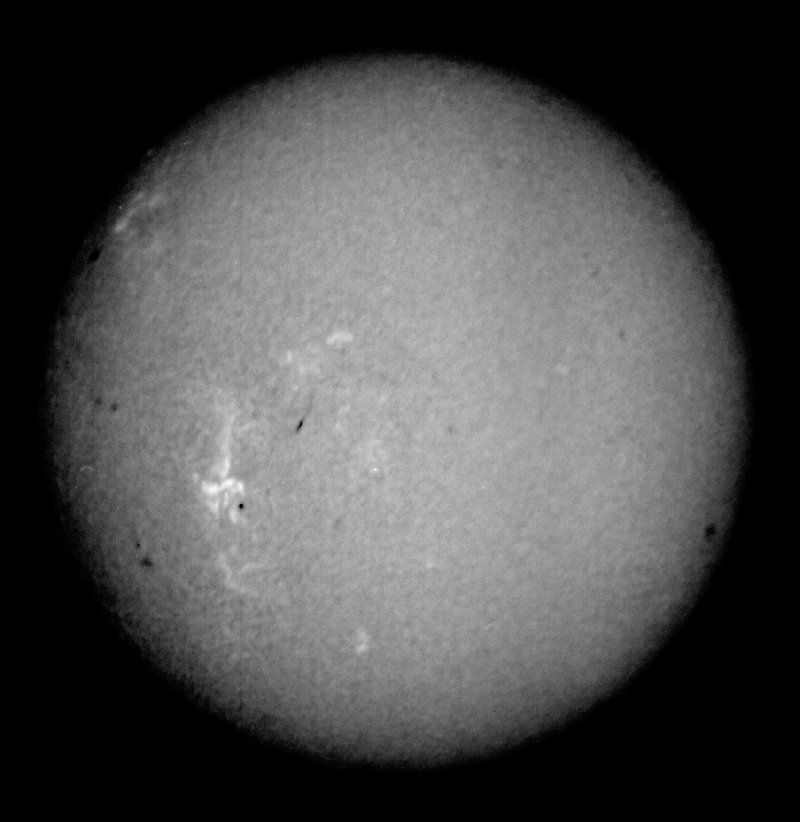
Shortly before I left Carleton College, the astronomy department obtained a Coranado H-alpha filter system, which I had fun trying out. Although they are not cheap, the views were fantastic! Unfortunately I did not have time to do much photography, being able only to take one image.
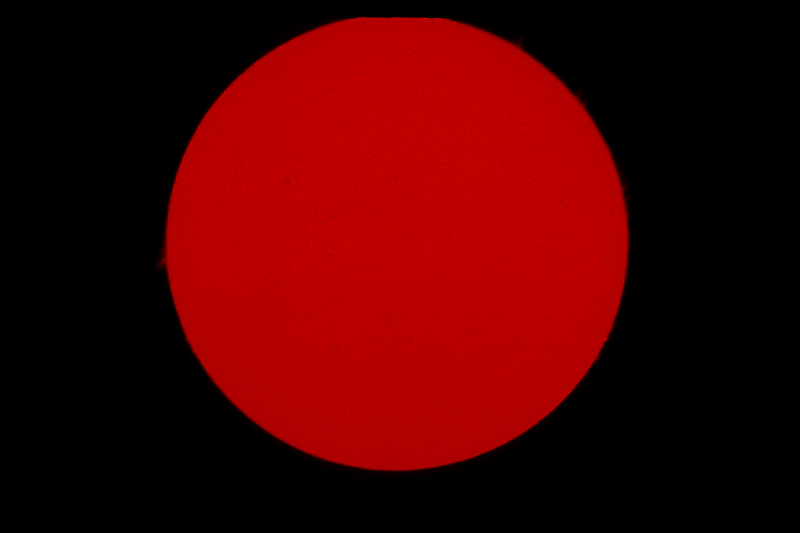
It does show one of the problems in trying H-alpha photography of the Sun. Colour film does not have sufficient dynamic range to capture surface detail, and at the same time correctly expose the prominences. For this photograph I tried to expose for the prominences, several of which can be seen.